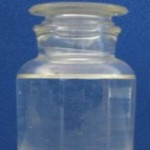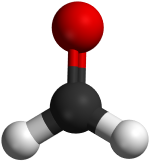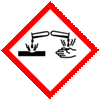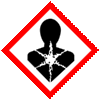CAS Number 50-00-0, Formaldehyde Solution and Formalin USP BP Ph Eur Food Grade Manufacturers Exporters







CAS Number 50-00-0, Formaldehyde Solution and Formalin Manufacturer Exporter
For Properties Specifications of Formaldehyde Solution and Formalin Click Properties, Specifications of Formaldehyde Solution and Formalin Manufacturer.
For Uses of Formaldehyde Solution and Formalin Click Uses of Formaldehyde Solution and Formalin Manufacturer.
For For SDS MSDS Sheet of Formaldehyde Solution and Formalin Click SDS Safety Data Sheet MSDS Sheet of Formaldehyde Solution and Formalin Manufacturer.
The Properties and Specifications of Formaldehyde Solution and Formalin:
Formaldehyde solutions appears as a colorless liquid with a pungent irritating odor.
Appearance: Clear colorless liquid.
Relative density:
around 0.82
Melting point: 93C to 96C for 37% solution.
Boiling point: -15C for 37% solution.
Formaldehyde Solution USP Grade Specifications:
CH2O - 30.03
Formaldehyde.
Formaldehyde CAS Number 50-00-0
Formaldehyde Solution contains not less than 34.5 percent, by weight, of formaldehyde (CH2O), with methanol added (9.0% to 15.0%) to prevent polymerization.
Packaging and storage: Preserve in tight containers, and preferably store at a temperature not below 15C.
Identification:
A: Dilute 2 mL with 10 mL of water in a test tube, and add 1 mL of silver-ammonia-nitrate: metallic silver is produced either in the form of a finely divided, gray precipitate, or as a bright, metallic mirror on the sides of the test tube.
B: Add 2 drops to 5 mL of sulfuric acid in which about 20 mg of salicylic acid has been dissolved, and warm the liquid very gently: a permanent, deep-red color appears.
Content of methanol: To pass the test -- between 9.0% and 15.0% (v/v) is found.
Formaldehyde Solution BP Eur Specifications
Formalin
Formaldehyde Solution (35 per cent), Ph Eur
CH2O -- 30.03 -- 50-00-0
Action and use: When suitably diluted, used in the treatment of warts.
DEFINITION
Content: 34.5 per cent m/m to 38.0 per cent m/m of formaldehyde (CH2O; Mr 30.03). It contains methanol as stabiliser.
CHARACTERS
Appearance: Clear, colourless liquid.
Solubility: Miscible with water and with ethanol (96 per cent). It may be cloudy after storage.
IDENTIFICATION
A. Dilute 1 ml of solution S (see Tests) to 10 ml with water. To 0.05 ml of the solution add 1 ml of a 15 g/l solution of chromotropic acid sodium salt, 2 ml of water and 8 ml of sulphuric acid. A violet-blue or violet-red colour develops within 5 min.
B. To 0.1 ml of solution S add 10 ml of water. Add 2 ml of a 10 g/l solution of phenylhydrazine hydrochloride, prepared immediately before use, 1 ml of potassium ferricyanide solution and 5 ml of hydrochloric acid. An intense red colour is formed.
C. Mix 0.5 ml with 2 ml of water and 2 ml of silver nitrate solution in a test-tube. Add dilute ammonia until slightly alkaline. Heat on a water-bath. A grey precipitate or a silver mirror is formed.
D. It complies with the limits of the assay.
TESTS
Solution S: Dilute 10 ml, filtered if necessary, to 50 ml with carbon dioxide-free water.
Appearance of solution: Solution S is colourless.
Acidity: To 10 ml of solution S add 1 ml of phenolphthalein solution. Not more than 0.4 ml of 0.1 M sodium hydroxide is required to change the colour of the indicator to red.
Methanol: To pass Gas chromatography. 9.0 per cent V/V to 15.0 per cent V/V.
Sulphated ash: Maximum 0.1 per cent, determined on 1.0 g.
The Uses of Formaldehyde Solution and Formalin:
It is used as a disinfectant and to preserve biological specimens. It is also used as a preservative in some foods and in many products used around the house, such as antiseptics, medicines, and cosmetics. Formaldehyde is used in the storage of biological samples and mummification as it hardens proteins and prevents them from decomposition. Also, it is used as disinfectant because it kills insects and many microorganisms. It is used as a preservative in some drugs. In addition, the solution used in hemodialysis unit contains formalin.
The MSDS-SDS Hazard Statement of Formaldehyde Solution and Formalin:
Formaldehyde Solution (with Methanol) SDS Safety Data Sheet
MSDS Sheet, Material Safety Data Sheet 12-Mar-22
1. Product Identification
Product Name & Other Names: Formaldehyde Solution (with Methanol) or Formalin (with Methanol).
CAS No.: 50-00-0
EINECS EC Code: 200-001-8
Molecular Weight: 30.03.
Suppliers: As per letterhead.
2. Hazards Identification
GHS, Globally Harmonized System Classification in accordance with 29 CFR 1910
Classification according to Regulation (EC) No 1272/2008
Acute toxicity, Oral (Category 3), H301
Acute toxicity, Dermal (Category 3), H311
Acute toxicity, Inhalation (Category 3), H331
Skin corrosion (Category 1B), H314
Skin sensitization (Category 1), H317
Germ cell mutagenicity (Category 2), H341
Carcinogenicity (Category 1B), H350
Specific target organ toxicity - single exposure (Category 1), H370
Specific target organ toxicity - single exposure (Category 3), Respiratory system, H335
Labeling according to GHS USA & Regulation (EC) No 1272/2008
GHS Label Elements  Toxic |
GHS Label Elements |
GHS Label Elements |
Signal Word: Danger
Hazard Statements:
H301+H311+H331: Toxic if swallowed, in contact with skin or if inhaled.
H314 Causes severe skin burns and eye damage.
H317 May cause an allergic skin reaction.
H335 May cause respiratory irritation.
H341 Suspected of causing genetic defects.
H350 May cause cancer.
H370 Causes damage to organs.
Precautionary Statements
P202: Do not handle until all safety precautions have been read and understood.
P260: Do not breathe dust/fume/gas/mist/vapors/spray.
P264: Wash ... thoroughly after handling.
P270: Do not eat, drink or smoke when using this product.
P271: Use only outdoors or in a well-ventilated area.
P272: Contaminated work clothing should not be allowed out of the workplace
P280-Wear protective gloves/protective clothing/eye protection/face protection.
P301+P310+330: IF SWALLOWED: Rinse mouth and immediately call a POISON CENTER or doctor/physician.
P302+P352: IF ON SKIN: Wash with soap and water.
P304+P340: IF INHALED: Remove victim to fresh air and keep at rest in a position comfortable for breathing.
P305+P351+P338: IF IN EYES: Rinse cautiously with water for several minutes. Remove contact lenses, if present and easy to do. Continue rinsing.
P308+313: IF exposed or concerned: Get medical advice/attention.
P314: Get Medical advice/attention if you feel unwell.
P360: Rinse immediately contaminated clothing and skin with plenty of water before removing clothes.
P363: Wash contaminated clothing before reuse.
P403+P233 Store in a well-ventilated place. Keep container tightly closed.
3. Composition/Information on Ingredients
Ingredient I: Formaldehyde 30-45% in water.
CAS No.: 50-00-0
EINECS EC Code: 200-001-8
Ingredient II: Methanol 5-20% in water.
CAS No.: 67-56-1
EINECS EC Code: 200-659-6
4. First Aid Measures
Always seek medical attention after first aid measures are provided.
Inhalation: Remove the victim to fresh air. If not breathing, give artificial respiration. If breathing is difficult, give oxygen. Get medical attention.
Ingestion: Do NOT induce vomiting. Never give anything by mouth to an unconscious person. Rinse mouth with water. Contact medical center quickly. Never give anything by mouth to an unconscious person. Get medical attention.
Skin Contact: Immediately flush skin with plenty of water for at least 15 minutes. Remove contaminated clothing and shoes. Get medical attention. Wash clothing before reuse. Thoroughly clean shoes before reuse.
Eye Contact: Check for and remove any contact lenses. Immediately flush eyes with running water for at least 15 minutes, keeping eyelids open. Cold water may be used. Get medical attention.
5. Fire Fighting Measures
Fire: Flash point: Not available.
Toxic fumes, carbon dioxide and carbon monoxide may be formed in fire.
Fire Extinguishing Media: Dry chemical, foam or carbon dioxide and water spray jet.
Extinguishing Media Not recommended: Avoid using solid water jet as it may scatter the fire.
Special Information: In the event of a fire, wear full protective clothing and NIOSH-approved self-contained breathing apparatus with full face piece operated in the pressure demand or other positive pressure mode. At elevated temperatures under fire conditions, it may produce toxic or irritating fumes. Fire-extinguishing work is done from the windward and the suitable fire-extinguishing method according to the surrounding situation is used. Uninvolved persons should evacuate to a safe place.
6. Accidental Release Measures
Personal precautions, protective equipment, and emergency procedures: Avoid breathing dust/fumes/gas/mist/vapors/spray. Use individual protective equipment (waterproof boots, suitable protective clothing, safety glasses, etc.). Prevent any contact with hot surfaces. Do not approach facing the wind.
Environmental precautions: Do not let the product enter drains, soil, or water sources.
Methods and materials used for containment cleanup procedures and Storage: Contain spilled material. Absorb with an inert, non-combustible absorbent material, (e.g., sand, earth, diatomaceous earth, vermiculite). Vacuum or sweep up and remove to an approved disposal container. Avoid mist formation. Keep away from heat. Keep away from sources of ignition. Provide ventilation. Contact Environment Agency.
7. Handling and Storage
Precautions for safe handling: Apply according to good manufacturing and industrial hygiene practices. Ensure proper ventilation. Wash thoroughly after handling. Do not drink, eat, or smoke while handling. Avoid contact with skin, eyes, and clothing. Minimize dust generation. Avoid breathing dust/fumes/gas/mist/vapors/spray. Use individual protective equipment (waterproof boots, suitable protective clothing, safety glasses, etc.). Prevent any contact with hot surfaces.
Conditions for safe storage, including any incompatibilities: Store in cool, dry, and ventilated area away from heat sources and protected from sunlight in tightly closed original container. Keep air contact to a minimum. Do not leave the material container open. Store protected from heat, sparks and ignition sources and incompatible materials. Do not store with incompatible materials like strong oxidizing agents, aniline, phenol, isocyanates, acid anhydrides, strong acids, strong bases, amines, peroxides, acid chlorides, alkali metals, reducing agents. Do not breathe mist or dust. Containers of may be hazardous when empty. Avoid contact.
8. Exposure Controls/Personal Protection
Airborne Exposure Limits:
Formaldehyde 37%, in Aqueous Solution
ACGIH: TLV-C 0.3 ppm
USA OSHA: PEL (TWA) 0.75 ppm
USA OSHA: PEL (STEL) 2 ppm
USA IDLH: 20 ppm
Methanol
ACGIH: TLV-TWA 200 ppm
ACGIH TLV-STEL: 250 ppm
USA OSHA: PEL (TWA) 260 mg/m³
USA OSHA: PEL (TWA) 200 ppm.
Ventilation System: A system of local and/or general exhaust is recommended to keep employee exposures as low as possible.
Personal Respirators (NIOSH Approved): For conditions of use where exposure to the substance is apparent and engineering controls are not feasible, consult an industrial hygienist.
Skin Protection: Wear impervious protective clothing, including boots, gloves, lab coat, apron, or coveralls, as appropriate, to prevent skin contact.
Eye Protection: Use chemical safety goggles and/or a full-face shield where splashing is possible. Maintain eye wash fountain and quick-drench facilities in work area.
Other Control Measures: Maintain good housekeeping in work area. Wash hands after handling.
9. Physical and Chemical Properties
Appearance: Clear liquid.
Odor: Typical aldehyde pungent smell.
Odor threshold: No data found.
pH: No data found.
Relative density: around 1.09
Boiling Point: >100C
Melting Point: No data found.
Flash point: No data found.
Auto-ignition temperature: No data found.
Decomposition temperature: No data found.
Upper/lower flammability or explosive limits: No data found.
Vapor pressure: No data found.
Vapor density: No data found.
Evaporation rate: No data found.
Flammability (solid, gas): No data found.
Partition coefficient: n-octanol/water: No data found.
Solubility: miscible with water
Viscosity: No data found.
Molecular Weight: 30.03.
Chemical Formula: HCHO.
10. Stability and Reactivity
Stability: Formaldehyde is stable under ordinary conditions of use and storage with the stabilizer.
Hazardous Decomposition Products: Carbon dioxide, carbon monoxide and toxic fumes may form when heated to decomposition.
Incompatibilities: Strong oxidizing agents, Aniline, Phenol, Isocyanates, Acid anhydrides, Strong acids, Strong bases, Amines, Peroxides, Acid chlorides, Alkali metals, Reducing agents, heat and sparks.
Conditions to Avoid: Heat, flames, ignition sources and incompatibles.
11. Toxicological Information
Oral rat LD50: Not available
The product is listed as carcinogen, Group 1: Carcinogenic to humans (Formaldehyde).
Warning: contains methanol. May be fatal or cause blindness if swallowed.
Mutagenic Effects: No data found.
Reproductive Effects: No data found.
12. Ecological Information
Environmental Toxicity: Toxic to fish and aquatic life.
Results of PBT and vPvB assessment: This substance/mixture contains no components considered to be either persistent, bioaccumulative and toxic (PBT), or very persistent and very bioaccumulative (vPvB) at levels of 0.1% or higher.
13. Disposal Considerations
Whatever cannot be saved for recovery or recycling should be managed in an appropriate and approved waste disposal facility.
14. Transport Information
DOT USA, TDG Canada & ADR/RID Europe
UN Number: 2209, Class: 8, Packing group: III
Proper shipping name: Formaldehyde solution
IMO/IMDG
UN Number: 2209, Class: 8, Packing group: III
Proper shipping name: Formaldehyde solution.
ICAO/IATA
UN Number: 2209, Class: 8, Packing group: III
Proper shipping name: Formaldehyde solution.
15. Regulatory Information
No additional information is available.
Section 16 - Additional Information
European Labeling in Accordance with EC Directives:
H301+H311+H331 Toxic if swallowed, in contact with skin or if inhaled.
H314 Causes severe skin burns and eye damage.
H317 May cause an allergic skin reaction.
H335 May cause respiratory irritation.
H341 Suspected of causing genetic defects.
H350 May cause cancer.
H370 Causes damage to organs.
Classification according to EU Directives 67/548/EEC or 1999/45/EC:
Hazard Symbols:
T Toxic
Xi Irritant
C Corrosive
Risk Phrases:
R23/24/25 Toxic by inhalation, in contact with skin and if swallowed.
R35 Causes severe burns.
R37/38 Irritating to respiratory system and skin.
R41 Risk of serious damage to eyes.
R43 May cause sensitization by skin contact.
R45 May cause cancer.
R46 May cause inheritable genetic damage.
R68 Possible risk of irreversible effects.
Anmol Chemicals & Pharmaceuticals Pvt. Ltd. is an off-shoot of Anmol Chemicals Taloja. It is located in MIDC Taloja and it is manufacturing pharmaceutical grades of API, Excepients, Food grade and Reagent grade chemicals. Anmol Chemicals & Pharmaceuticals Pvt. Ltd. is a several decades old group of companies, engaged in manufacturing, supplying, distributing, wholesale supplies for actual users, retail or small pack supplies for research and development chemicals, fine and speciality chemicals, pharmaceutical excipients, mineral fortifiers in chemically pure, Analytical reagent grade, IP BP USP Ph Eur EP JP and other pharmaceutical grade monograph including FCC Food grade chemicals and Nutraceuticals, Mineral Fortifiers at best prices.

Formaldehyde Solution and Formalin Structure
CAS Number 50-00-0, Formaldehyde Solution and Formalin USP BP Ph Eur Manufacturer Exporter
ANMOL CHEMICALS & PHARMACEUTICALS Pvt. Ltd.
India, USA, Europe, UAE
TELEPHONE: +912223770100
Navi Mumbai, INDIA
e-mail: info(At the rate i.e. @)anmol.org
Copyright. 18-nov-24
We manufacture:
Glacial Acetic Acid Manufacturer



